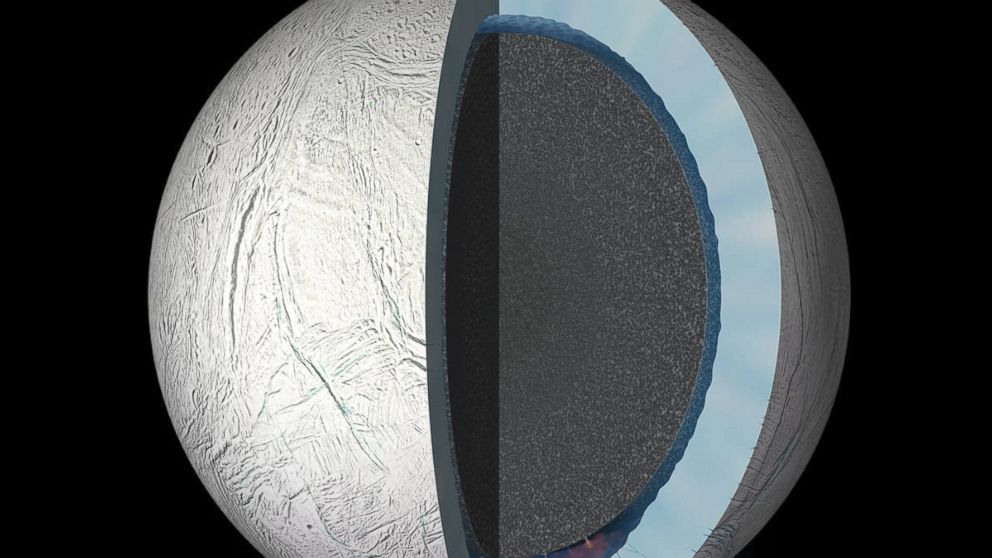NASA's Cassini Probe Will Sample an Alien Ocean on Saturn's Moon Enceladus
Cassini probe will examine habitability of ocean on Saturn's moon Enceladus.

— -- NASA's hugely successful Cassini space probe is set to get up close with a plume from an alien ocean on Saturn's moon Enceladus. The flyby -- which will happen on Wednesday -- is significant because NASA said the moon's global ocean and evidence of possible hydrothermal activity means it could hold the ingredients needed to support simple life.
When Cassini makes its "deep dive" through a plume on Wednesday, it will pass within 30 miles of Enceladus' south pole, moving through icy spray believed to come from the ocean and gathering images and data that will give new insights about what is going on beneath its frozen surface.
It will be the first time Cassini has passed this low through the moon's icy plume. NASA said the flyby isn't intended to detect life but instead to "provide powerful new insights about how habitable the ocean environment is within Enceladus."
One of the most important measurements the Cassini probe will take during its flyby is the amount of molecular hydrogen in the plume. That's two hydrogen atoms stuck together -- the lightest molecule in the universe. Knowing this level will provide more insight on how much hydrothermal activity is happening on the moon, according to scientists. Hydrothermal activity, which is the interaction between hot water and rocks, would indicate the potential for simple life forms to exist in the moon's ocean.
Scientists have been fascinated with Enceladus since the discovery a decade ago of continually erupting fountains of icy material and believe it is a potential location in the search for a habitable environment in our solar system.
Cassini will make its final flyby of Enceladus in December at an altitude of 3,106 miles with the goal of examining heat from the moon's interior.
Launched in 1997, the Cassini mission arrived in the Saturn system in 2004 and has been working ever since to study the gas giant and its dozens of moons. The probe's mission is scheduled to end in September 2017, when it will make a fatal plunge into Saturn's atmosphere.




